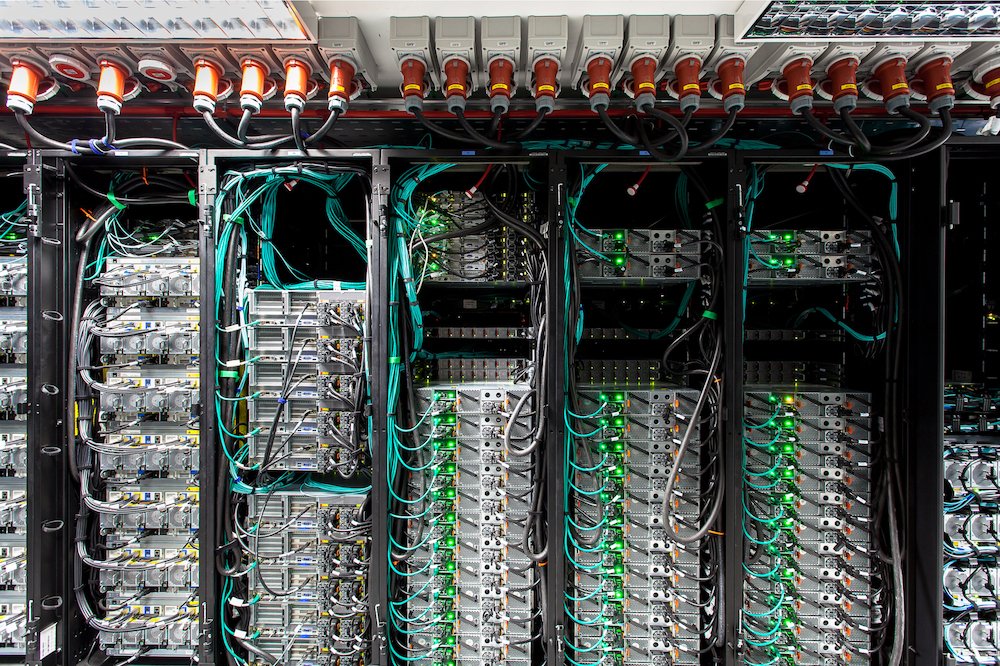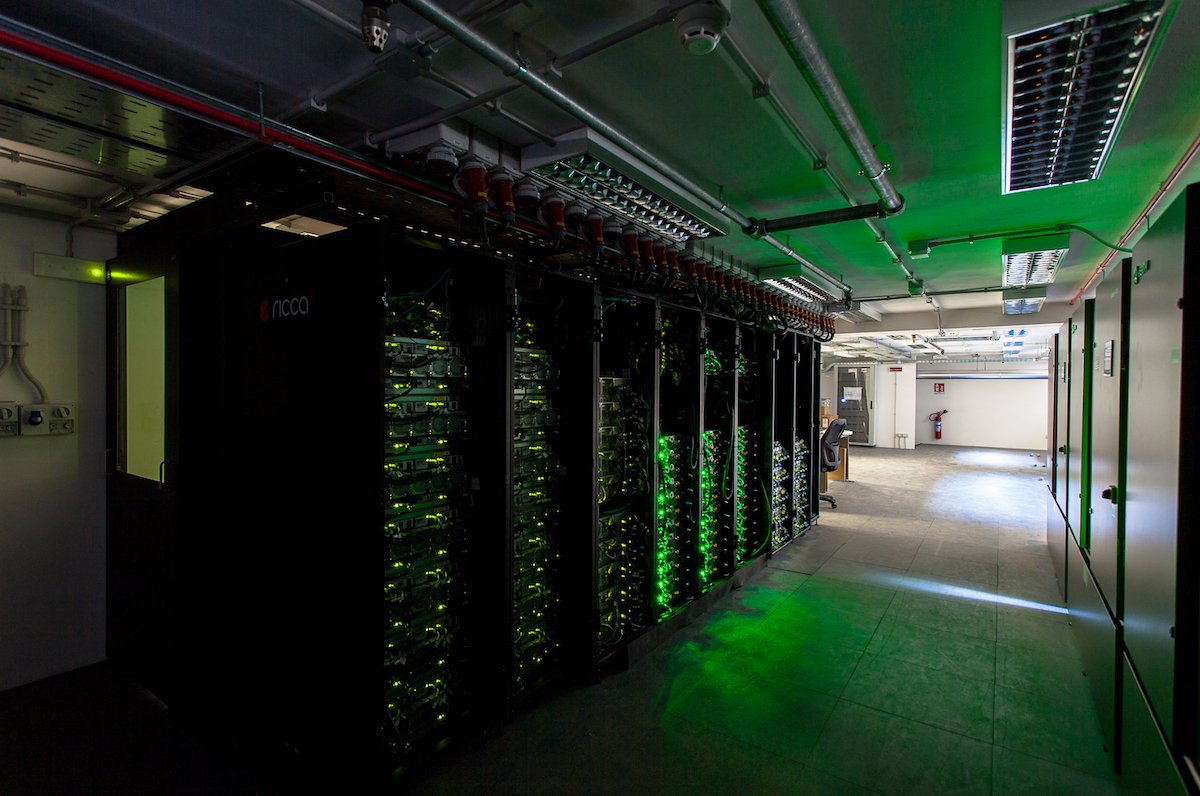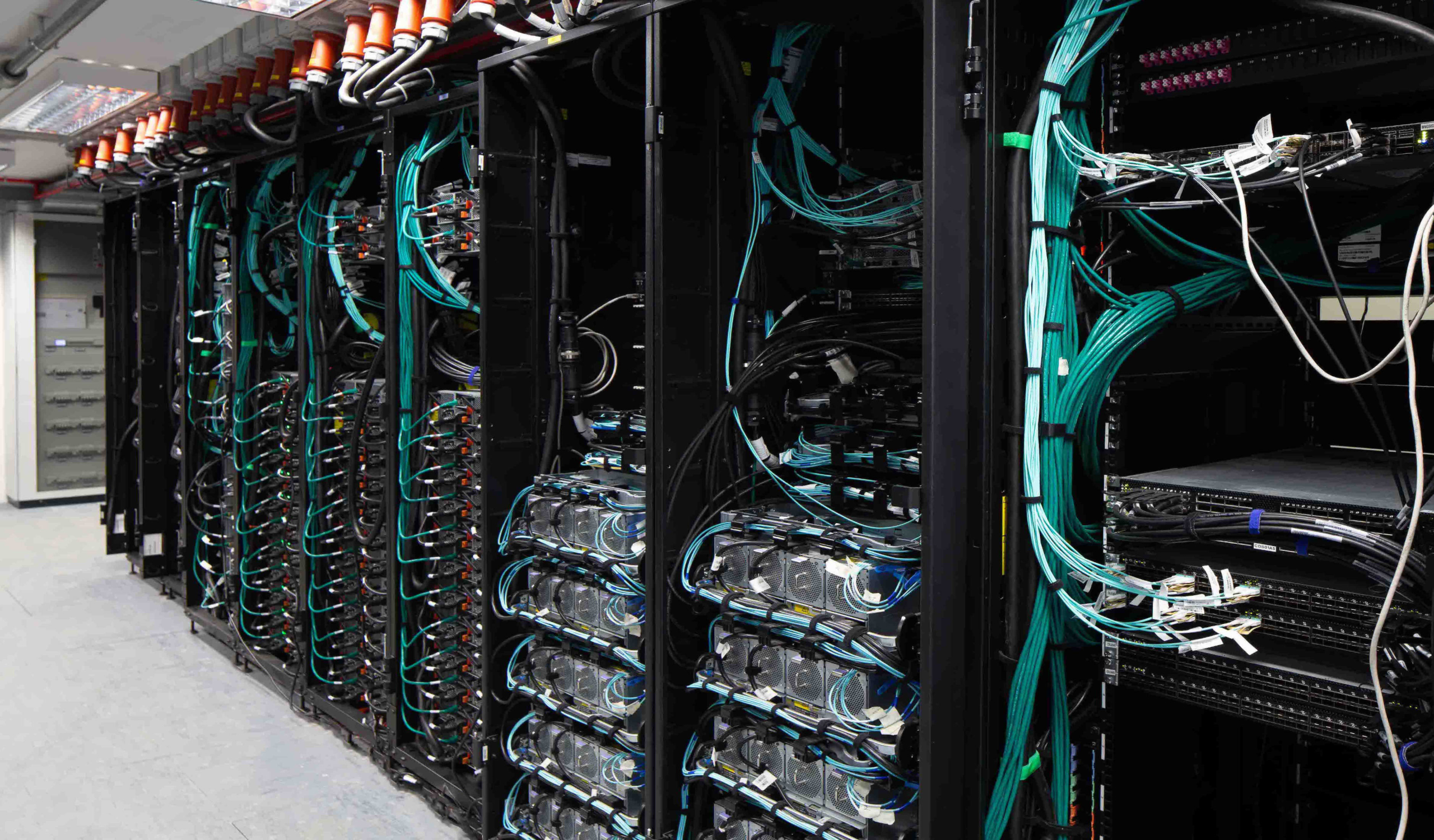High Performance Computing Center (HPCC)
Since 2008, the High Performance Computing Center is the most powerful computational facility in Italy and among the most advanced in Europe, fully dedicated to Climate Change research.
In 2022 the High Performance Computing Center changed its location at the new CMCC headquarters in Lecce. This also includes the upgrading of the computing and storage facilities.
32,400
cores
2,359
TFlops
Theoretical peak performance (1TFlop = 1,000 billion operations per second)
37
PetaBytes
Disk Storage capacity
62
PetaBytes
Tape Library (archiving system)
The High Performance Computing Center is composed of two interacting HPC facilities:
CASSANDRA
Cassandra consists of 180 Lenovo SD650 V3 computing nodes, each featuring dual Intel Xeon Max 9480 processors with 56 cores each, resulting in a grand total of 20,160 cores. This configuration, supported by Intel’s new Sapphire Rapids HBM family of processors, enables Cassandra to achieve an outstanding theoretical peak computing power of 1,225 TFlops.
Furthermore, to ensure the effective preservation and accessibility of vast amounts of climate data generated by CMCC’s research activities, the HPCC incorporates the Deep Archive Storage System (DASS), offering a capacity of 62 Petabytes with 20 LTO8 tape-drives.
JUNO
Juno has a computing power (theoretical peak performance) of about 1,134 TFlops and is based on the 3rd generation Intel Xeon Scalable processors (code named “Ice Lake”) and also on the NVIDIA A100 GPU (NVIDIA Ampere architecture).
The upgrading of the computing and storage facilities project was realized in 2021-22 through the European funds dedicated to the Regional Operational Programme 2014–2020 (Apulia region).
CMCC’s long-term archiving system
CMCC is equipped with a system to manage and preserve the huge quantity of climate data produced by the research and operational activities at CMCC for the medium/long term.
The hardware components:
– IBM TS4500 tape library with 20 LTO8 drives and 2 accessors, 62PBytes of capacity
– 2 servers Lenovo ThinkSystem SR630
– 1 IBM Flash System 5000 storage system
– 16Gbps FC SAN implemented with 2 Lenovo FC switches DB6205
JUNO
Compute node type: Lenovo SD630 v2
Processor type: Intel Xeon Platinum 8360Y (36 cores)
Processor Speed: 2.4 GHz
# of processor cores: 12,240
GPU type: NVIDIA A100
# GPU: 20
# of nodes: 170 (dual processors nodes)
Memory per node: 512 GB
Interconnection: Infiniband HDR (200Gbps)
Peak Performance: 1,134 TFlops
Operating System: Red Hat v.8.4 (Linux x86_64)
Batch Queueing System: IBM Spectrum LSF v.10.2 (HPC Suite)
Cluster Parallel File System: IBM Spectrum Scale v.5.1 (GPFS)
File systems:
- /users_home: 100TB
- /work: 11.3 PB of usable capacity
- /data: 11.7 PB of usable capacity
CASSANDRA
Compute node type: LENOVO SD650 V3 (Direct Water Cooled)
Processor type: Intel Xeon Max 9480 (56 cores) (Sapphire Rapids HBM)
Processor Speed: 1.9 GHz
# of processor cores: 20,160
# GPU: n.a.
# of nodes: 180 (dual processors nodes)
Memory per node: 1024 GB
Interconnection: Infiniband NDR (400Gbps)
Peak Performance: 1,225 TFlops
Operating System: Red Hat v.9.0 (Linux x86_64)
Batch Queueing System: IBM Spectrum LSF v.10.x (HPC Suite)
Cluster Parallel File System: IBM Spectrum Scale v.5.x (GPFS)
File systems:
- /users_home: 100TB
- /work: 13.6 PB of usable capacity
In order to manage and preserve for medium/long term the huge quantity of climate data produced by the research and operational activities at CMCC, in 2019 a new archiving system has been deployed.
In 2022, the CMCC archiving system moved to the new CMCC data center and has been upgraded in order to extend both its capacity (to 40 PetaBytes) and its I/O throughput by adding 8 more LTO8 drives.





